Introduction to A/B Testing in Emails
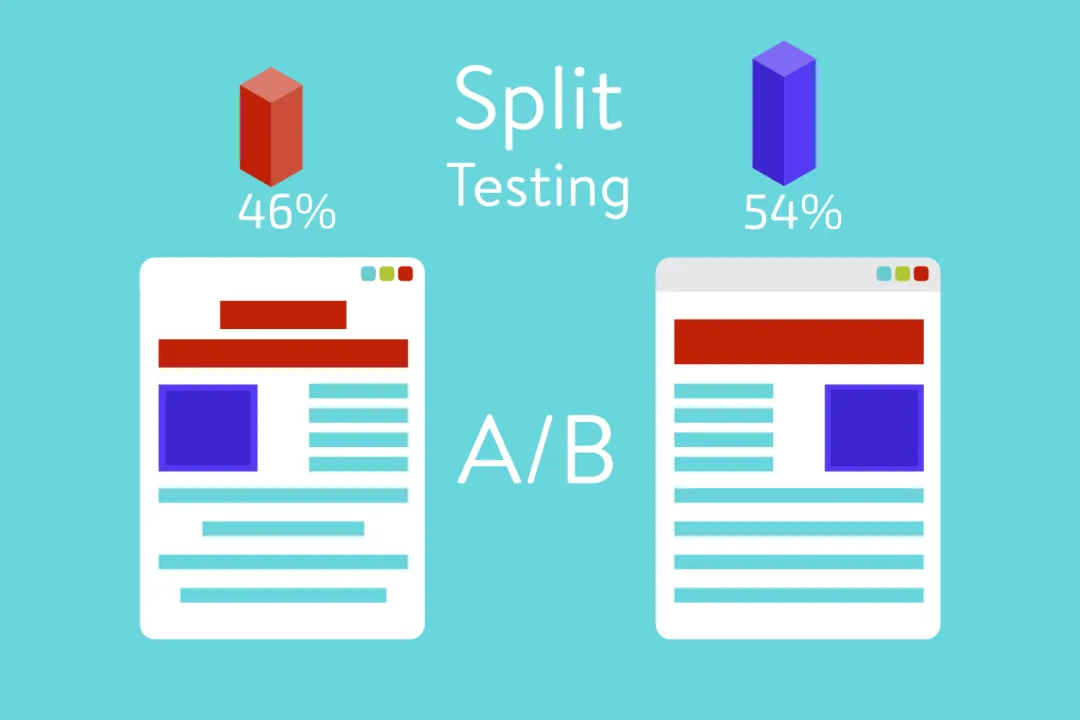
What is Email A/B Testing
Email A/B Testing, often termed split testing, is a method to understand what resonates best with your target audience by comparing two versions of an email. This technique allows marketers to send variant A (the control) and variant B (the test) to a small percentage of their email list to analyze which version drives better performance in terms of open rates, click-through rates, and conversion rates.
Email A/B testing Start with identifying variables like subject lines, email body content, or call-to-action buttons for testing and ensuring your sample size is large enough to provide reliable results and use statistical significance to confidently pick the winning version.
- For example, test two different subject lines to see which one leads to higher open rates.
- Alternatively, experiment with different email layouts or body copy to assess engagement through click-through rates.
- A statistically significant outcome ensures the results are not due to chance.
Why Email A/B Testing Should Be Your Go-To
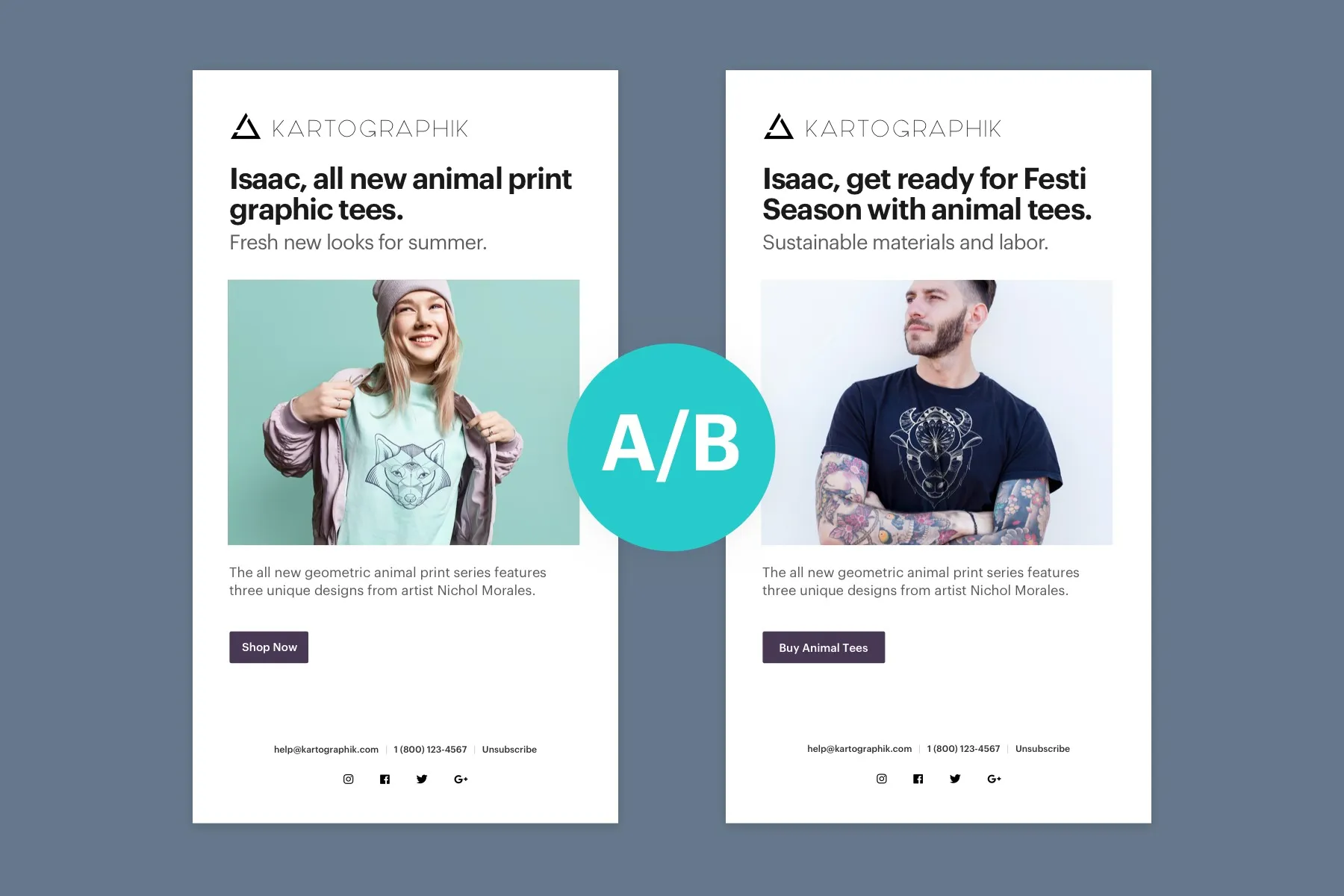
Email A/B testing, an invaluable strategy for optimizing your email campaigns, significantly enhances your marketing efforts by enabling data-driven decisions.
This method involves sending two variations of an email to a small segment of your audience to see which performs better, and then using the winner for the broader audience.
Here’s why and how it should become an integral part of your marketing toolkit:
1. Maximizes Email Engagement
- Improves Open Rates: By A/B testing subject lines, you can understand what catches your audience's interest. Data shows that personalized subject lines can boost open rates by up to 50%.
- Enhances Click-Through Rates (CTR): Testing different call-to-action (CTA) placements or messages can lead to a significant increase in CTR, sometimes by as much as 300%.
2. Increases Conversion Rates
- Refines Email Content: Through testing, you can identify which content types (videos, images, text) resonate with your audience, leading to higher engagement and conversion rates. For instance, including videos in emails can increase conversions by up to 80%.
- Optimizes Email Layout: The structure of your email can impact how your message is received. A/B testing layouts can result in a 40% increase in conversion for the more effective design.
3. Reduces Bounce Rates and Unsubscriptions
- Tailors Email Frequency: Finding the sweet spot for how often to send emails can prevent subscribers from feeling bombarded, reducing bounce rates and unsubscriptions by over 20%.
- Customizes Email Tone and Style: Matching your email's tone and style with your audience's preferences can make your communication more effective and reduce unsubscriptions.
4. Enhances ROI
- Cost-Effective: A/B testing is a low-cost way to optimize your email marketing strategy, leading to higher ROI. For every $1 spent on email marketing, the average return is $42.
- Data-Driven Decisions: Leveraging concrete data from A/B tests allows for more informed decisions, cutting down on guesswork and enhancing the effectiveness of your marketing campaigns.
When to A/B Test Your Emails
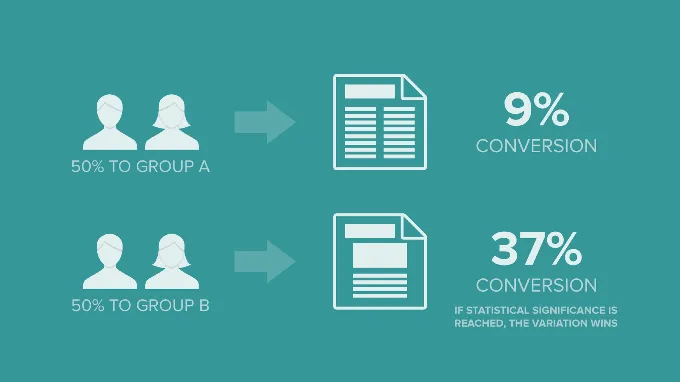
When to A/B test your emails is as critical as knowing what elements to test. Strategic timing can maximize the effectiveness of your A/B tests, ensuring that the insights you gain are both relevant and actionable. Here’s a guide on the best times to implement A/B testing in your email campaigns:
At the Beginning of a Campaign
Before launching a major email campaign, A/B testing can help you fine-tune your message and delivery for optimal impact. This preemptive approach allows you to understand what resonates best with your audience, ensuring higher engagement right from the start.
Test key elements like subject lines or CTA buttons in smaller, segmented parts of your audience to determine which versions yield better results. Use these insights to inform the broader campaign.
When You Notice a Change in Engagement
A sudden drop or spike in engagement rates (open, click-through, conversion) signals that audience preferences or behaviors might have changed. A/B testing during these periods helps you adapt to these shifts and meet your audience's evolving needs.
Identify the metric that has changed and test variables directly related to it. For instance, if your open rate has declined, experiment with different subject lines or sending times.
Before and After Major Updates
If you’re planning to overhaul your email design, content strategy, or any significant aspect of your emails, A/B testing before and after these changes can provide insights into their impact.
Conduct tests on elements related to the updates before implementing them. After the updates are made, run follow-up tests to compare performance and gauge the effectiveness of the changes.
During Peak Seasons
During periods of high engagement, such as holiday seasons, sales events, or product launches, A/B testing can help you capitalize on increased traffic. Testing during these times can yield insights that are immediately actionable and potentially more impactful due to the higher volume of engagement.
Focus on testing elements that can maximize conversions, such as promotional offers, urgency-inducing language in CTAs, or personalized recommendations.
Regularly, as Part of Your Routine
The digital landscape and consumer preferences are always evolving. Regular A/B testing as part of your ongoing email strategy ensures that your campaigns remain effective and relevant over time. It allows you to continuously refine and optimize your email marketing efforts.
Set a schedule for regular A/B testing of various email elements. This could be monthly or quarterly, depending on your email frequency and capacity to analyze results and implement changes.
When Introducing to New Audiences
As your subscriber list grows and diversifies, what worked for your initial audience may not resonate as well with newcomers. A/B testing helps tailor your content to suit the preferences of your expanding audience.
Segment your new subscribers and test key email elements to discover what appeals to this group. This approach ensures that your emails remain engaging as your audience evolves.
How to Decide Which Elements of Email to A/B Test

Deciding which elements of an email to A/B test is crucial for improving your email marketing performance. This process allows you to understand better what resonates with your audience, leading to higher engagement rates and, ultimately, conversions.
Let's dive into the elements you should consider for A/B testing:
1. Subject Line
What to Test: The phrasing of your subject line can significantly impact open rates. Consider testing personalized vs. non-personalized subject lines, the use of numbers, and the tone (e.g., formal vs. casual).
Campaign Monitor reports that emails with personalized subject lines are 26% more likely to be opened. Testing different subject lines helps identify the right balance between personalization and clarity that resonates with your audience.
How: Segment your audience and send one version of your email with a personalized subject line ("Hey [Name], check this out!") and another with a generic one ("Exclusive offer inside!"). Measure which version yields a higher open rate.
Examples of Pairs of Subject Lines You Might Test to Evaluate Preferences:
1. Discount Announcement vs. Exclusive Offer
- A: "Get 20% Off Your Next Purchase Today!"
- B: "Exclusive Offer: Save 20% Just for You!"
2. Urgency vs. FOMO (Fear of Missing Out)
- A: "Hurry! Sale Ends in 24 Hours"
- B: "Don't Miss Out: Your Favorites Are on Sale for a Limited Time Only"
3. Personalization vs. Generic
- A: "John, Your Personal Discount Awaits!"
- B: "Unlock Your Exclusive Discount Inside"
4. Benefit-Focused vs. Feature-Focused
- A: "Transform Your Space with Our Best-Selling Lamps"
- B: "Introducing Our Latest Collection of Designer Lamps"
5. Direct Call-to-Action vs. Invitational
- A: "Shop Now and Save Big on Our Summer Collection"
- B: "You're Invited: Exclusive Access to Our Summer Collection Sale"
6. Product Highlight vs. Value Proposition
- A: "New Arrivals: Summer Dresses You'll Love"
- B: "Feel Fabulous This Summer with Dresses That Turn Heads"
7. Short vs. Long
- A: "Flash Sale!"
- B: "Act Fast: Limited-Time Flash Sale on All Accessories!"
8. Use of Numbers vs. Text
- A: "25% Off All Shoes This Weekend Only"
- B: "Step Up Your Style with a Special Shoe Discount"
9. Question vs. Statement
- A: "Ready to Upgrade Your Tech?"
- B: "Tech Upgrade Alert: Exclusive Deals Inside"
10. Emotive Language vs. Rational Appeal
- A: "Make a Statement: Exclusive Jewelry Sale"
- B: "Smart Savings on Stunning Jewelry Collections"
2. Email Content
What to Test: The body of your email is where you convince your reader to take action. Elements to test include the length of the email, the use of bullet points vs. paragraphs, and the inclusion of images or videos.
According to a study by Marketing Sherpa, emails that are too long or too short can see a drop in engagement. Finding the sweet spot in email length can improve reader engagement and conversion rates.
How: Create two versions of your email: one concise and one detailed. Track which version drives more clicks and conversions, indicating which length your audience prefers.
3. Call-to-Action (CTA)
What to Test: The wording, color, and placement of your CTA button can significantly affect your click-through rates (CTR).
A HubSpot study found that personalized CTAs convert 202% better than default versions. Testing different CTAs can uncover the most effective way to encourage your audience to take the desired action.
How: Test two versions of your email, each with a different CTA ("Start your free trial" vs. "Get started for free"), color, or placement. Analyze the CTR to determine which CTA performs better.
By testing various aspects of these buttons, businesses can significantly increase conversions.
Test 1: Button Color
- Experiment with different colors for the CTA button.
- Color psychology suggests that certain colors can influence user behavior. For example, a HubSpot study found that a red CTA button outperformed a green one by 21%.
- Create two versions of the page, one with a red CTA button and another with a green one. Measure which one has a higher click-through rate over a significant sample size.
Test 2: Button Text
- Alter the wording used on the CTA button.
- The phrasing can impact the user's likelihood to click. For instance, using action-oriented, first-person language ("Get My Guide" vs. "Download Guide") could increase the click-through rate by making the action feel more personal and immediate.
- Implement two different versions of the button text. Analyze the conversion rates to see which text leads to more completed actions.
Test 3: Button Placement
- Change the location of the CTA button on the page.
- Visibility is key to driving actions. A button that is immediately visible without scrolling (above the fold) may perform better than one that's located further down the page.
- Design one page version with the button above the fold and another with the button below the fold. Track and compare the engagement rates to determine the most effective placement.
4. Sending Time
What to Test: The day of the week and time of day you send your emails can impact open and click-through rates.
Data from Campaign Monitor suggests that the optimal time to send emails varies by industry and audience habits. For instance, B2B emails perform best during business hours, while B2C emails may see higher engagement during evenings and weekends.
How: Split your email list and send the same email at different times or days. Compare the open and click-through rates to identify the most effective sending time for your audience.
5. Email Format
What to Test: Testing between HTML-rich emails versus plain text can reveal preferences in your audience’s reading experience.
While HTML emails allow for creative designs and interactive elements, a study by HubSpot showed that plain text emails had a higher open rate, possibly due to their simplicity and mobile-friendliness.
How: Send one segment of your audience an HTML version of your email and another segment a plain text version. Monitor which format has a higher engagement rate.
How to Perform A/B Testing on Email Marketing Campaigns
Performing A/B testing, or split testing involves comparing two versions of an email to see which one performs better on a specific metric, such as open rates or click-through rates. Here’s how you can execute A/B testing effectively in your email campaigns:
Identify the Objective
Before you begin, it's essential to determine what you aim to improve with your A/B testing. Do you want to increase open rates, click-through rates, or perhaps the conversion rates? Setting a clear goal will guide your testing process and help you measure success accurately.
Click-through rate: Aiming to enhance this metric can lead to testing elements like the call-to-action or the message’s relevancy.
Open rates: To improve open rates, you might test different subject lines or sender names.
Choose One Variable to Test
Focusing on one variable at a time allows you to pinpoint exactly what influences the outcome of your test. Testing multiple variables simultaneously can muddy the results, making it hard to understand what worked or didn't.
Subject lines: Test different subject lines to see which leads to higher open rates. According to a study by CoSchedule, personalizing email subject lines can increase open rates by up to 26%.
Email content/layout: Testing different content layouts or messaging to see what drives more engagement or conversions.
Call to Action (CTA): Experiment with different CTAs to find out which one drives more clicks. This could involve changing the text, color, or placement of the button.
Segment Your Audience
Segmentation ensures that the results of your A/B test are reliable and that each segment receives a version of the email that could appeal to them most. It's crucial to test on segments that are large enough to provide statistically significant results.
Target audience: Segment your contact list based on demographics, past purchasing behavior, or engagement levels.
Sample size: Use a sample size calculator to determine a statistically significant sample size for your test. For instance, if you have a mailing list of 10,000 subscribers, testing on at least 1,000 (10%) might provide reliable insights.
Execute the Test
Run your A/B test by sending out the two versions of your email to the respective segments of your audience. Make sure that the testing period is long enough to gather adequate data but not so long that external factors could influence the results.
Duration: A/B tests typically run for a period of 24 to 48 hours to allow all recipients a chance to engage with the email.
Timing: Consider the time of day and the day of the week when scheduling your tests, as these can significantly impact your results.
Implement and Iterate
The final step is to implement the learnings from your A/B test into your broader email marketing strategy. Continuous testing and optimization are key to keeping your email marketing campaigns fresh and engaging.
Email marketing software: Utilize email marketing tools that offer A/B testing features to streamline the process.
Continuous improvement: Regularly test different elements of your emails, even if you believe you've found the optimal setup. Consumer preferences and behaviors change over time, necessitating ongoing optimization.
Best Practices for A/B Testing Emails to Increase the Efficiency of Your Email Marketing Strategy
Enhancing the efficiency of your email marketing strategy through A/B testing is not just about making minor adjustments; it's about implementing a systematic approach to understand what truly resonates with your audience. A/B testing, when done correctly, can significantly improve key metrics such as open rates, click-through rates, and ultimately, conversion rates. Here are the best practices to ensure your A/B testing efforts are as effective as possible.
Select One Variable at a Time
Testing one variable allows you to isolate its effects on your campaign's performance. This clarity is essential for making informed decisions about which changes to implement.
- Examples of variables to test: Subject lines, sender names, email content, CTA buttons, and email design are all variables you can test. For instance, changing the color of a CTA button can increase click-through rates by up to 21%.
Use the Right Tools
Utilize email marketing tools that support A/B testing. These tools can help automate the process, from sending out variations to analyzing results.
- Automation and analysis: Tools like Mailchimp or HubSpot allow you to set up A/B tests easily and provide analytics to understand your results better. Using these tools, marketers can save time and get actionable insights faster.
Test and Analyze Rigorously
After running your A/B test, carefully analyze the data to determine which version performed better. Look beyond just the primary metric to understand the broader impact of your test.
- Interpret results accurately: Ensure your test runs long enough to collect significant data but not so long that external factors skew results. A two-week period is often sufficient for most email campaigns.
- Consider secondary metrics: Even if your primary goal was to increase open rates, examine click-through and conversion rates as well to get a fuller picture of an email's performance.
Craft Compelling Content Variations
Beyond testing superficial elements, delve into the content itself to see what truly engages your audience. This involves experimenting with different tones, storytelling approaches, and even the structure of your content.
- Tone and style: Experiment with varying tones (professional, friendly, humorous) to see what aligns best with your audience's preferences. For example, a conversational tone might increase engagement rates by up to 40% in some industries.
- Content format: Test different formats, such as text-heavy emails versus those dominated by images or videos. Metrics have shown that emails incorporating videos can boost click-through rates by up to 300%.
Optimize for Mobile
With over half of all emails opened on mobile devices, optimizing your email design for mobile is no longer optional. It’s essential to test how your emails render on different devices and platforms.
- Responsive design: Ensure your emails use responsive design techniques so they look good and are easy to read on any device. Emails not optimized for mobile may see up to a 40% drop in open rates.
- CTA button size: Test the size and placement of CTA buttons to ensure they are easily clickable on a mobile device. A minimum size of 44x44 pixels is recommended for touch targets.
Personalize and Segment Further
While segmenting your audience is a crucial first step, diving deeper into personalization and micro-segmentation can uncover even more insights and opportunities for optimization.
- Micro-segmentation: Break down your audience into even smaller segments based on specific behaviors or preferences. For instance, segmenting by engagement frequency can help tailor content more precisely, potentially increasing engagement by over 50%.
- Dynamic content: Use A/B testing to find out which types of dynamic content (content that changes based on the recipient's data) resonate best with different segments. This could include personalized product recommendations or content tailored to the recipient's location.
Leverage Your Company Name for Brand Recognition
The way you present your company name in your marketing emails can significantly impact open rates and overall engagement. Testing variations can help you understand how your audience responds to different presentations of your brand.
- Sender name variations: Experiment with different sender name formats in your marketing emails, such as "Company Name," "First Name from Company Name," or even a specific product name from your company. This can affect the personal feel of the email and potentially increase open rates.
- Subject line inclusion: Test including your company name in the email subject line to see if it impacts recognition and open rates. For example, "PageTurners: Your Next Read Awaits" versus "Your Next Read Awaits."
Best Email A/B Testing Tools to Use in 2024
Here are some of the best email A/B testing tools to consider:
1. HubSpot Email Marketing

HubSpot's comprehensive platform includes robust email marketing tools that support A/B testing, making it easier to refine your email marketing strategy. With its user-friendly interface, you can easily test different subject lines, email body content, and email templates, and analyze which variations drive better open rates and click-through rates.
2. Mailchimp
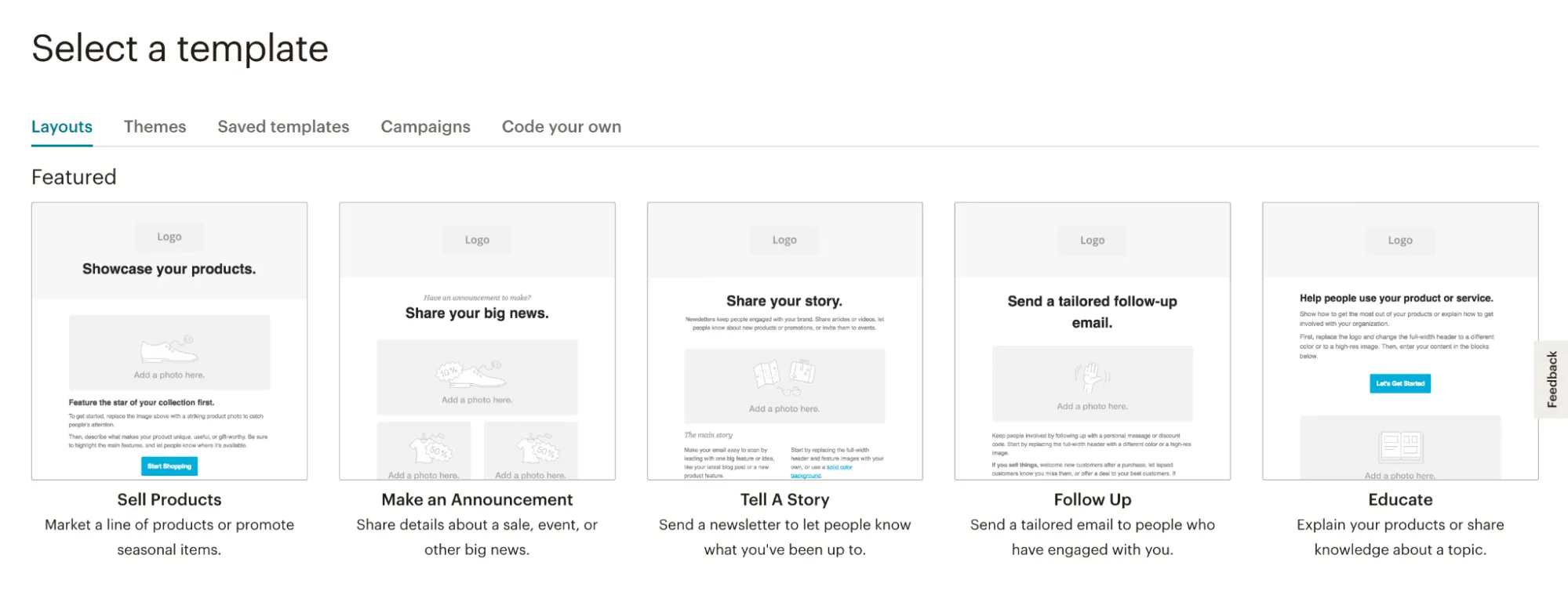
Known for its simplicity and effectiveness, Mailchimp offers A/B testing features that help you test different subject lines, sender names, and send times. Its detailed reports help you gather data on what works best, aiding in making informed decisions for your email marketing efforts.
3. Optimizely
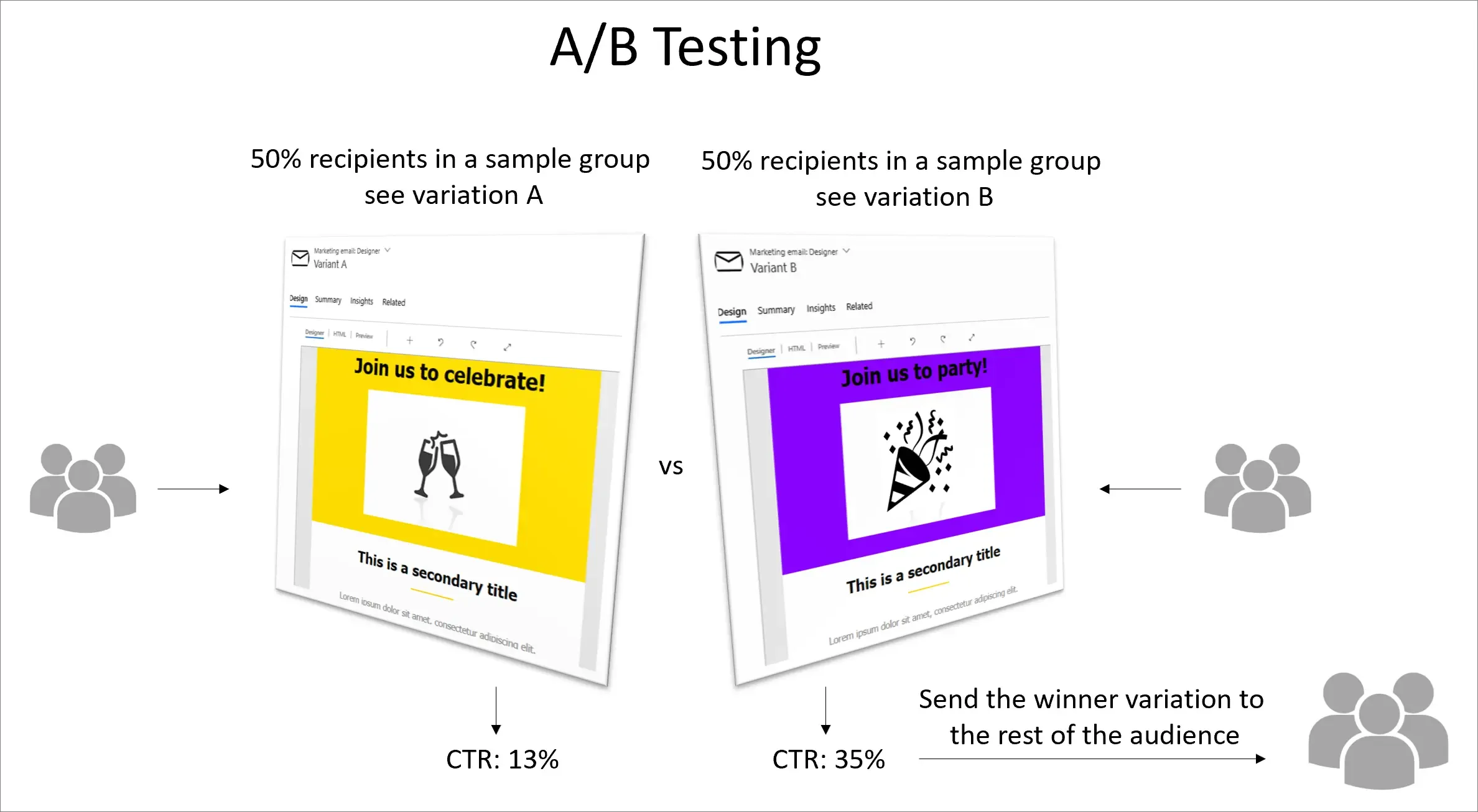
While Optimizely is broader than just email, its powerful A/B testing capabilities allow you to experiment with every aspect of your marketing email, from subject lines to the content and design elements of the email body. Optimizely can significantly contribute to your email marketing strategy by providing empirical data on customer preferences.
4. Constant Contact
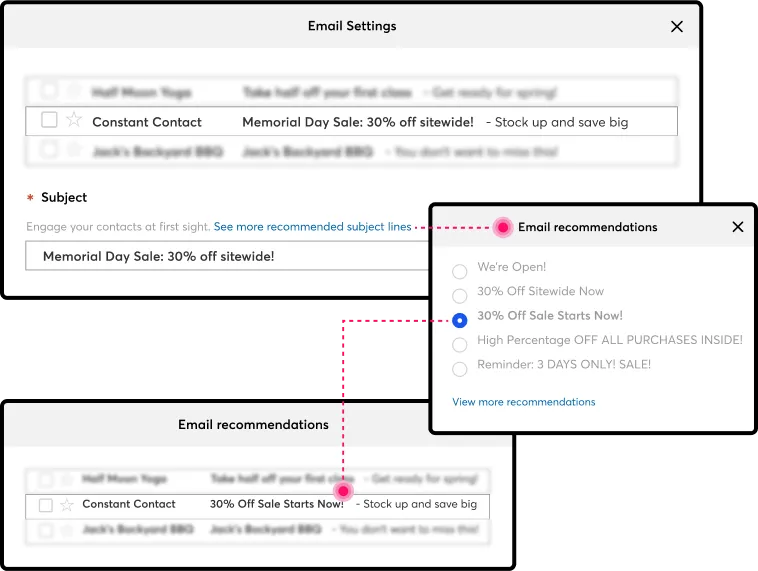
Constant Contact's email marketing software includes A/B testing features that are incredibly straightforward. It's particularly beneficial for small businesses looking to test subject lines and content without delving too deeply into the complex statistical significance of the results.
5. Sendinblue
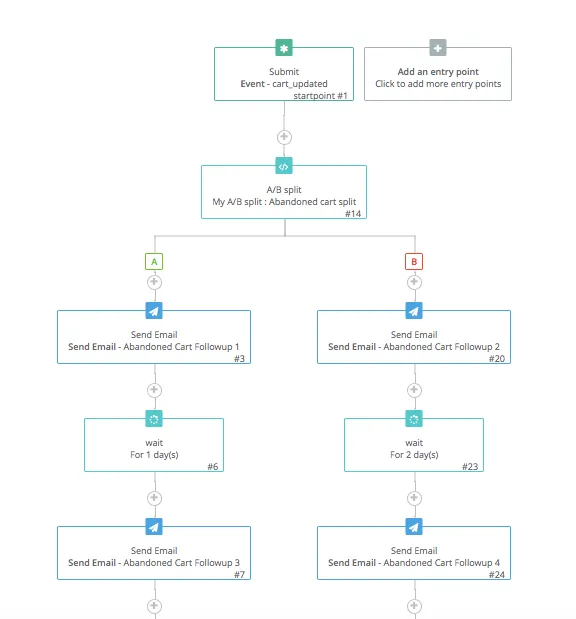
This tool stands out for its ability to automate A/B testing across multiple variables, including email content and send times. Sendinblue's email marketing software also offers insights into click-through rates and conversion rates, helping you tweak your campaigns for better performance.
6. Campaign Monitor
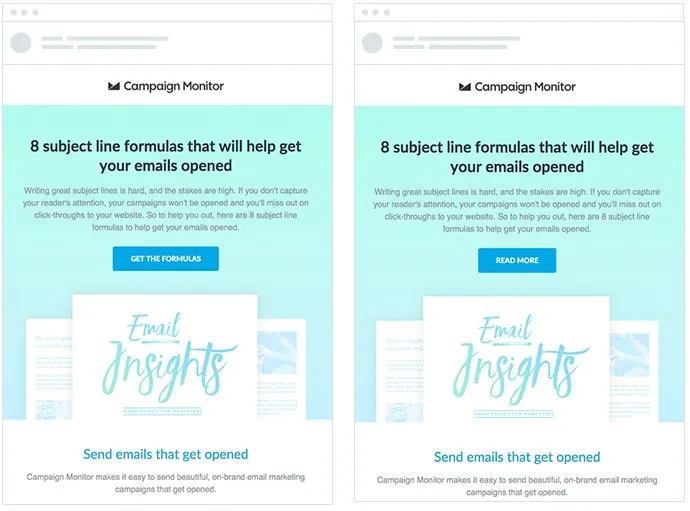
With its easy-to-use A/B testing feature, Campaign Monitor allows you to test different subject lines and email content to see what resonates best with your target audience. It also helps in optimizing your email marketing efforts by analyzing the results of these tests.
7. GetResponse

GetResponse provides robust A/B testing capabilities, allowing you to test up to five versions of your marketing email to determine the winning version based on open rates, click-through rates, and other metrics. This tool is excellent for refining your email marketing strategy and enhancing email marketing campaigns' efficiency.
8. Marketo

Marketo offers advanced A/B testing features suitable for large businesses and enterprises. Its capabilities allow for comprehensive testing across multiple elements of an email campaign, from the subject line length to the design elements and CTA placement. Marketo is ideal for those looking to dive deep into analytics and gather data to inform future campaigns.
9. ActiveCampaign
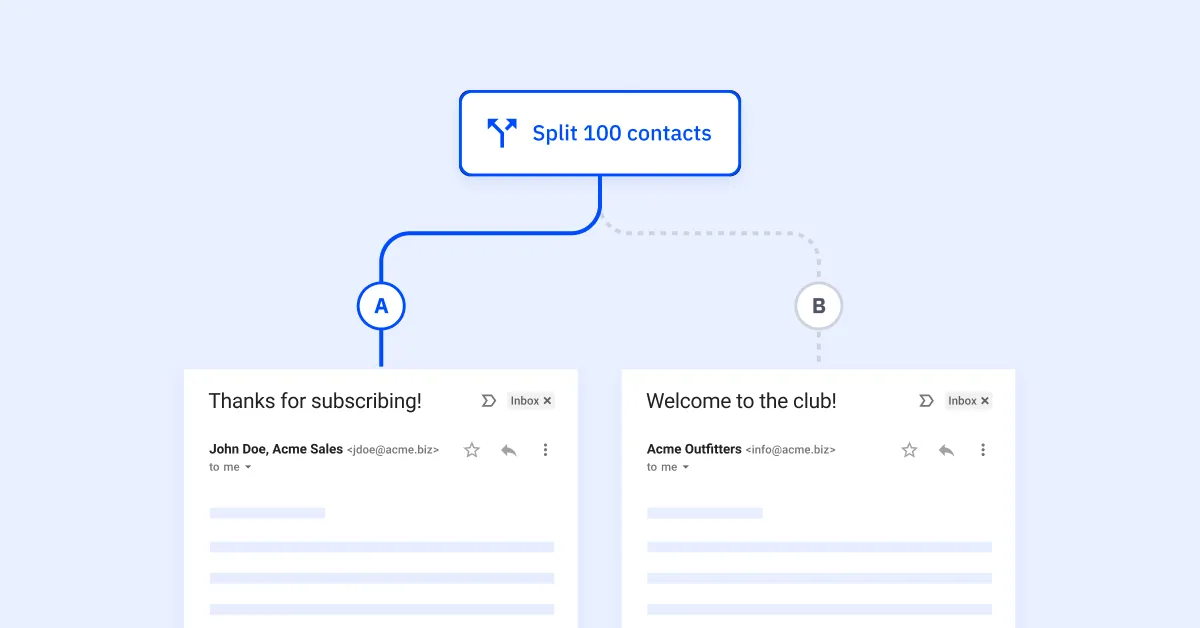
ActiveCampaign's strength lies in its CRM and email marketing software, providing detailed A/B testing tools that help personalize emails based on customer behavior and preferences. It's an excellent choice for businesses focusing on tailoring their marketing emails and analyzing different subject lines' effectiveness.
10. Litmus

Litmus offers a suite of email marketing tools, including A/B testing that allows you to test and optimize your email campaigns across different email clients and devices. This ensures your email campaigns look great everywhere, which is crucial for maintaining high engagement rates.
Final Thoughts on A/B Testing of Emails
A/B testing, or split testing, is crucial for enhancing your email marketing strategies. By comparing two versions of an email to see which one performs better, you can make data-driven decisions to improve open rates, click-through rates, and conversion rates. It involves testing variables like subject lines, email content, or CTAs and requires a careful analysis of the results to choose the winning version.
This process not only helps in optimizing individual campaign elements but also contributes to the overall success of your email marketing efforts by ensuring your messages resonate well with your target audience. Regularly applying A/B testing allows for continuous improvement, making your email campaigns more effective over time.
Further Reading
Dive deeper into email marketing with our curated selection of articles. These resources from Aloré's blog are meticulously crafted to equip you with the latest strategies and insights, ensuring your email campaigns are not just seen but acted upon. From crafting compelling content to growing your subscriber list, our guides cover all facets of email marketing. Whether you're a novice email marketer or looking to enhance your existing strategies, these articles provide invaluable knowledge:
- Mastering the Art of Email Marketing: Learn the intricacies of email marketing and how to effectively engage your audience. This comprehensive guide offers insights into crafting emails that captivate and convert, ensuring your messages stand out in a crowded inbox. Explore Now.
- The Ultimate Guide to Email Templates: Discover the power of email templates in streamlining your communication strategy. This article dives into best practices for creating templates that resonate with your audience, saving you time while maintaining a personal touch. Learn More.
- Best Regards vs Kind Regards: Navigate the nuances of email sign-offs with this insightful comparison. Understanding the subtle differences can enhance the tone of your emails, making your communication more effective. Read Further.
- Leveraging Cold Emails for Web Design Services: Uncover strategies for crafting cold emails that get noticed. This guide provides actionable tips for web designers looking to pitch their services via email, including how to personalize your message for better engagement. Dive Deeper.
- Strategies to Grow Your Email List: Expanding your email list is crucial for the success of your marketing efforts. This article outlines effective tactics for attracting new subscribers, ensuring a steady growth of your audience base. Find Out How.

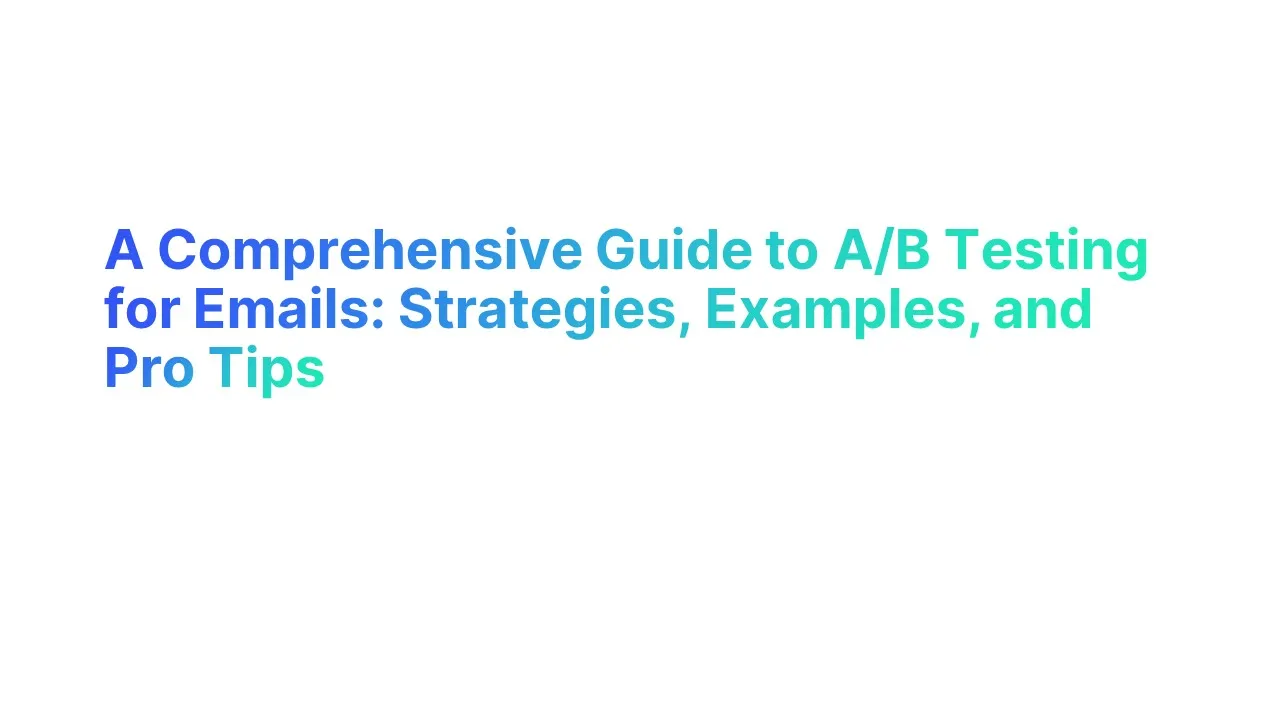



.jpg)

.jpg)
